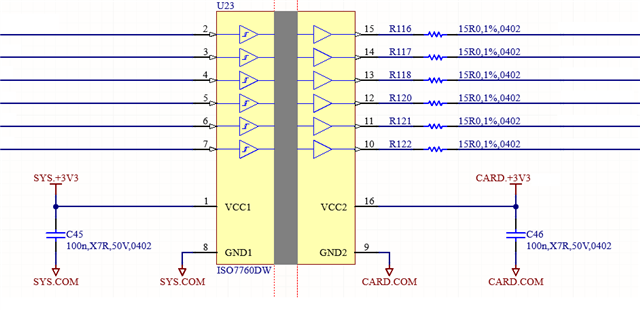Tool/software:
Hi,
We have a circuit using the ISO7760DW, on two boards we have seen this part fail with the power supply VCC1 shorted to GND1.
Our circuit is straight forward; we are translating 3.3V logic signals across an isolation barrier.
The output drives inputs on an FPGA, the input signals primarily come from 3.3V logic gates. All input signals are referenced to the same rail as VCC1.
We have confirmed no overshoot or over voltage on these input signals.
This has happened on two separate boards on two separate occasions. The boards have not undergone any destructive or stress testing, all testing has been done on a bench or EMC radiated emissions lab.

Any ideas what could be causing this failure?


